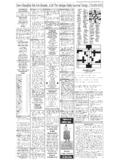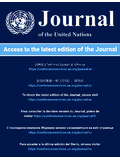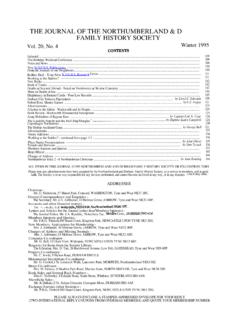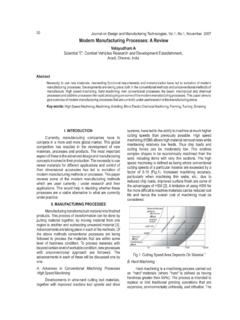Transcription of TheVeterinary Journal - lamsam-casalotti.org.uk
1 Randomised double-blind, positive-controlled trial to assess theefficacy of glucosamine/chondroitin sulfate for the treatment ofdogs with osteoarthritisGrainne McCarthya,*, James O Donovanb, Boyd Jonesa, Hester McAllisterc,Michael Seedd, Carmel MooneyaaDepartment of Small Animal Clinical Studies, School of Agriculture, Food Science and Veterinary Medicine, College of Life Sciences,UCD Dublin, Belfield, Dublin 4, IrelandbDepartment of Veterinary Pathology, School of Agriculture, Food Science and Veterinary Medicine, College of Life Sciences, UCD Dublin, Belfield,Dublin 4, IrelandcDepartment of Surgery, School of Agriculture, Food Science and Veterinary Medicine, College of Life Sciences, UCD Dublin, Belfield, Dublin 4, IrelanddWilliam Harvey Research Institute, St. Bartholemew s Medical School, Charterhouse Square, London EC1M 6BQ, UKAccepted 14 February 2006 AbstractThirty-five dogs were included in a randomised, double-blind, positive controlled, multi-centre trial to assess the efficacy of an orally-administered glucosamine hydrochloride and chondroitin sulfate (Glu/CS) combination for the treatment of confirmed osteoarthritis ofhips or elbows.
2 Carprofen was used as a positive control. Dogs were re-examined on days 14, 42 and 70 after initiation of was then withdrawn and dogs were re-assessed on day 98. Response to treatment was based on subjective evaluation by par-ticipating veterinarians who recorded their findings at each visit. Dogs treated with Glu/CS showed statistically significant improvementsin scores for pain, weight-bearing and severity of the condition by day 70 (P< ). Onset of significant response was slower for Glu/CS than for carprofen-treated dogs. The results show that Glu/CS has a positive clinical effect in dogs with osteoarthritis. 2006 Elsevier Ltd. All rights :Osteoarthritis; Canine; Glucosamine/chondroitin sulfate; Clinical trial1. IntroductionOsteoarthritis (OA) is characterised by low-gradeinflammation that leads to progressive degenerativechanges in the structure and function of a joint (Beale,2004).
3 In dogs, most OA occurs secondary to joint injury,joint instability or developmental abnormalities of the jointthat result in accelerated turnover of the articular cartilage(McLaughlin and Roush, 2002).Conventional therapy using corticosteroids or non-ste-roidal anti-inflammatory drugs (NSAIDs), is designed toreduce inflammation and relieve pain and stiffness. Use ofNSAIDs has been limited by adverse effects which havebeen ascribed to the blockade of homeostatic mechanismsinvolving cyclooxygenase (Vane and Botting, 1996). Thecommonest adverse effect in dogs is gastrointestinal erosionand ulceration (Kore, 1990). A new generation of NSA-IDS, including carprofen and meloxicam, has enhancedanti-inflammatory activity and reduced side-effects (Holt-singer et al., 1992; Forsyth et al., 1998).Glucosamine (Glu) and chondroitin sulfate (CS) are com-ponents of many dietary supplements used for treatment ofOA in several species.
4 Glucosamine is an amino-monosac-charide precursor of the disaccharide unit of glycosamino-glycan, which is the building block of proteoglycans, the1090-0233/$ - see front matter 2006 Elsevier Ltd. All rights *Corresponding author. Tel.: +353 1 7166014; fax: +353 1 McCarthy). Veterinary Journal 174 (2007) 54 61 TheVeterinary Journalground substance of articular cartilage (Bassler et al., 1992).Chondroitin sulfate, a polymer of repeating disaccharideunits (galactosamine sulfate and glucuronic acid) is the pre-dominant component of articular cartilage and is a naturalcomponent of several other body tissues including tendons,bones and vertebral discs (Paroli et al., 1991).The combination of Glu/CS has been shown to protectagainst chemically induced synovitis in dogs (Canapp et al.,1999), to stimulate cartilage metabolism and to inhibit itsdegradation (Lippiello et al.
5 , 1999; Johnson et al., 2001).The combination has also been reported to reduce symp-toms of OA in humans (Leffler et al., 1999; Das and Ham-mad, 2000), and the clinical signs of OA in horses (Hansonet al., 1997) and dogs (Johnson et al., 2001). Beneficialstructure-modifying effects have been demonstrated histo-logically in experimental models using rabbits (Lippielloet al., 1999), rats (Beren et al., 2001) and dogs (Johnsonet al., 2001). In addition, Glu/CS is well tolerated whenadministered to dogs for prolonged periods (McNamaraet al., 1996). However, one placebo-controlled trial evalu-ated meloxicam, carprofen and Glu/CS with manganesefor the treatment of OA in dogs and reported no significantimprovement in the dogs given the Glu/CS with manganeseproduct (Moreau et al., 2003).This prospective, randomised, double-blind, positive-controlled, multicentre clinical trial was conducted toassess the efficacy in dogs of orally administered Glu/CSfor the treatment of clinical OA of elbows and/or Materials and AnimalsForty-two client-owned dogs were recruited by eightparticipating veterinarians.
6 Twenty-four dogs were entiremales, ten entire females, six neutered females and two neu-tered males. Twenty-eight dogs were Labrador or Goldenretrievers and their crosses. The remainder included tenother breeds. Informed owner consent was obtained andthe trial protocol was approved by the University s EthicsCommittee and licensed by the Department of Healthand Children under the Cruelty to Animals Act (1876)and the Department of Agriculture and Inclusion/exclusion criteriaDogs of any breed or sex with clinical signs of chroniclameness (present for at least one month), stiffness andjoint pain and radiological evidence of OA of hips and/orelbows were eligible for inclusion. Animals which werepregnant; were receiving any medication; or had hepatic,renal or cardiovascular disease, gastrointestinal ulcerationor a bleeding disorder were excluded.
7 Dogs with lamenessdue to infectious, immune-mediated, neurological or neo-plastic disease and dogs which had received any previousdrug or dietary supplement for the treatment for OA werealso Pre-treatment evaluationDogs were clinically examined and samples were col-lected for baseline haematology, clinical chemistry and fae-cal occult blood tests during the pre-treatment of the affected joints were interpreted by theradiologists at the UCD Veterinary Hospital, UniversityCollege Assessment protocolVeterinarians recorded the severity of the clinical signsat each visit using an ordinal scoring system (Table 1).The scoring system was developed based on subjectivescoring systems as reported in previous studies (Vasseuret al., 1995; Holtsinger et al., 1992). Before commencement,participants were thoroughly briefed on the assessmentprotocol to achieve standardisation of observation andanalysis.
8 This was done by providing each participant witha detailed dossier of the trial protocol followed by a com-prehensive explanation of the assessment protocols byone of the authors (GMcC). Treatment productsDogs were given either Glu/CS (Synoquin SA, VetPlusLtd.) or carprofen (Rimadyl, Pfizer). Each gram of theGlu/Cs formulation contained the following active ingredi-ents; glucosamine hydrochloride 475 mg/g, chondroitinsulfate 350 mg/g,N-acetyl-D-glucosamine 50 mg/g, ascor-bic acid 50 mg/g and 30 mg/g of Zn sulfate. Each productwas dispensed in size 00 gelatin Capsugel capsules and thecapsules were presented such that on dispensing, eachtreatment was indistinguishable from the other, thusenabling the double-blind study. For the trial the Glu/CScapsules contained 750, 666 or 500 mg of the Glu/Cs for-mulation made up to 1 g with mannitol BP1filler.
9 Carpro-fen capsules contained 10, 20, 25, 30, 50 or 75 mg of activeingredient made up to 1 g with mannitol BP filler. Placebocapsules contained 1 g of mannitol BP alone. Encapsula-tion was carried out according to Treatment protocolDogs were assigned to treatment groups centrally, bythe trial co-ordinator, who assigned dogs to alternate treat-ment groups strictly by order of recruitment. The trial co-ordinator was not involved in the assessment of participat-ing dogs. Glu/CS was administered according to the man-ufacturer s datasheet recommendation at a rate of 1 g ofactive ingredient twice daily to dogs weighing 5 kg, g twice daily to dogs weighing 20 40 kg and 2 g twicedaily to dogs weighing >40 kg for 42 days. After 42 days,1 British Manufacturing McCarthy et al. / The Veterinary Journal 174 (2007) 54 6155the daily dose of Glu/CS was reduced by one-third for thesubsequent 28 days.
10 Carprofen was given in accordancewith the manufacturer s datasheet at a loading dose of2 mg/kg bodyweight twice daily for seven days followedby a once daily maintenance dose of 2 mg/kg. Mannitol-filled placebo capsules were administered as a second cap-sule daily to ensure blinding-compliance. A dosing chartwas supplied to aid owner compliance. All medicationwas given with food. Veterinarians and owners were una-ware which treatment was being administered. Animalswere re-assessed on days 14, 42, 70 and 98 after initiationof treatment. Treatment was stopped on day 70. The cap-sules remaining were counted at each visit as a compliancecheck. If there was deterioration in a dog s signs betweendays 70 and 98, any necessary treatment was implementedat the discretion of the supervising Data handling and statisticsThe Mann Whitney two-tailed test was used to comparethe baseline data prior to treatment.




